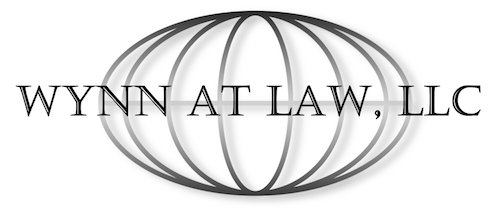A. What the Managed Forest Law Program is
Wisconsin’s Managed Forest Law (MFL) and Forest Crop Law (FCL) programs encourage private landowners to use their property for sustainable forestry by offering reduced property taxes.[1] The MFL program is the only program currently open for enrollment, as the FCL program was closed in 1986. Private landowners have the choice to enroll in the MFL program for either 25 or 50 years.[2] Those enrolled in the program work with the DNR to create a plan to accomplish objectives such as: production of timber trees for harvesting, protection of wildlife, and preservation of recreational activities such as kayaking, swimming, and hiking, in addition to other forest health goals. The production of timber trees is the main objective of the program.
B. Eligibility Requirements
- To qualify for the MFL program, you must have at least 20 acres of contiguous land, which can either be composed of one 20-acre parcel, or two 10-acre parcels that touch one another.
- At a minimum, 80% of the MFL land must be capable of producing merchantable timber.[3] The other 20% of the MFL land can be land that is unsuitable for wood production, such as swampy or sandy land.
- The length of the portion of land that is capable of producing timber must be at least 120 feet wide. Sections less than 120 feet are still permitted, so long as the width ratio is 4 to 1, or less.[4]
- If the MFL is renewed or entered into the program in 2017 or later, then the land may not contain any buildings, except those used exclusively for storage.[2] However, if your parcel is larger than 20 acres, you may designate only part of it as MFL land and use the non-MFL land for building purposes. Structures and fixtures needed for sound forestry are allowed, but must be agreed upon with the Wisconsin DNR.[5]
- The MFL land may not be within a recorded subdivision.[6]
- The parcel that the MFL parcel falls within must be up-to-date on property taxes.[2]
C. Public MFL Land Versus Closed MFL Land
MFL land must either be designated as “open” or “closed” to public recreation. If the land is designated as open, then there must be access to the public by foot for the following activities: hunting, fishing, hiking, sight-seeing, and cross-country skiing.[7] There are numerous other requirements for MFL land that is open to the public and what “open to the public by foot” requires.[8] Although open MFL land requires a few more requirements and monitoring efforts, landowners enjoy a lower tax rate than MFL landowners with land designated as “closed”.
If you are interested in finding open MFL land near you, visit the Wisconsin DNR’s Public Access Land Map at the following link: Wisconsin DNR. Although the public does not have to let an owner of open MFL land know that they will be accessing the land, the DNR recommends letting the owner know as a courtesy and also for safety purposes.[2]
Those who wish to designate their MFL land as “closed” should note that each municipality may only allow up to 320 acres total to be designated as closed. All 320 acres can be under the same ownership, thus pushing new MFL prospects out, unless they designate their land as open. However, MFL owners whose programs took effect on or after April 28, 2004 may modify their “open” or “closed” designation up to 2 times during the term of their program.
D. Management Plan
A management plan is the governing document for a landowner’s participation in the MFL program and is laid out by an initial discussion with a Certified Plan Writer or the Wisconsin DNR itself. Certified Plan Writers can either work independently of the WDNR or can be contracted by the WDNR. Either way, the management plan must be prepared by a Certified Plan Writer or the department.[9] The management plan contains some mandatory rules, such as harvesting timber per the plan’s standards, tree planting and treatment, soil control, etc.
Failure to comply with the management plan results in a $250 non-compliance fee per mandatory provision, which are collected by the municipality where the land is located. These fees can stack up quickly in the event of more than one mandatory violation and if they are not paid timely.[10] In addition to Certified Plan Writers, local Tax Law Forestry Specialists are available to assist with the questions regarding management plans and to remind landowners of mandatory practices.
E. Perks of the MFL – Forest Certification and Selling Your Trees
Those enrolled in the MFL program can also voluntarily enroll for membership in the “MFL Certified Group”, which allows members to sell timber as “certified” to the open market once timber becomes ready to harvest.[2] This means that the timber has the seal of being sustainably produced, and enrollment in the group provides members with educational resources. To harvest the timber, a landowner should consult a professional forester, a list of which can be found on the DNR’s website.
F. Selling or Transferring Designated MFL Land
Sellers of real estate enrolled in the MFL program are required to disclose the status of the MFL land to prospective buyers in either the residential or vacant land condition report. After a property sale is completed, the new owner must either file a transfer form to keep the land designated as MFL or voluntarily withdraw from the program within 30 days.[11]
A seller has 10 days after acceptance of the land purchase contract to provide the buyer with required information involving: a disclosure stating that the land will continue to be enrolled in the MFL program, the program’s length (25 or 50 years), and a disclosure informing the buyer that the DNR will continue to monitor the forest for compliance with the MFL plan.[2]
Buyers and/or sellers are entitled to withdrawal from the program at any time, but are subject to withdrawal fees, discussed below.
G. Withdrawing from the MFL Program and Associated Fees
Withdrawal from the MFL program may either be voluntary or involuntary. Voluntary withdraws may occur at any time, but are subject to a withdraw tax, which can be significant. The withdraw tax is typically calculated by multiplying the tax rate the property was subject to in the year prior by the assessed value of the land in the year prior, and then multiplying that number either by 10 or the number of years that the property was part of the MFL program, whichever number is fewer.[12] However, the withdraw tax can be calculated in a different manner, as it depends on how the land was entered into the MFL program.[2]
Voluntary withdraws can also be accomplished for only part of the MFL land, such as if the owner wishes to construct on part of the MFL land. This type of construction withdraw is subject to a few more conditions, which can be found in Wisconsin Statute § 77.88(3)(b). The Wisconsin Department of Revenue can help landowners estimate the withdraw tax, but such service is subject to a fee.[13]
An involuntary withdrawal may occur for violation of the stipulated MFL obligations, such as constructing a building on productive forest land, and is subject to a $300 withdrawal fee in addition to a withdrawal tax.[2] In addition, each failure to comply with a forestry practice, as specified in an owner’s management plan, is subject to a $250 noncompliance assessment.[14] For more information on withdrawing from the MFL program, landowners are encouraged to contact their local Tax Law Forestry Specialist.
Conclusion:
If you own land that you are considering enrolling in the MFL program, reach out to a Certified Plan Writer (CPW) to discover your options. CPWs are required as part of the process, so it is not a bad idea to consult one early to ensure that all requirements are met. If you are in the market for land and find out that it is part of the MFL program, make sure you understand what the requirements of the program are and what the withdraw taxes will be, if applicable. Tax Law Forestry Specialists are also helpful resources to understand the MFL program’s implication on property taxes. A list of CPW’s and Tax Law Forestry Specialists, as well as more information on the MFL program can be found on the DNR’s website: https://dnr.wisconsin.gov/topic/ForestLandowners
While Wynn at Law does not assist with the enrollment or withdraw of MFL land, we assist with the purchase or sale of land that is enrolled in the program.
Schedule a consultation with Wynn at Law, LLC today to discuss the purchase or sale of real estate that is enrolled in the MFL program.
Contact us today for a consultation at 262-725-0175 or our website’s contact page. Wynn at Law, LLC is based in Southern Wisconsin and has three office locations: Lake Geneva, Delavan, and Salem.
Sources:
[1] Wisconsin Department of Natural Resources website. Managed Forest Law | | Wisconsin DNR
[2] Wisconsin Department of Natural Resources Program Summary 972b04e8-4a3e-49f8-aaee-fb537b0a7d51.pdf (widencdn.net)
[3] Wis. Admin. Code § NR 46.17(1)(a)
[4] Wis. Admin Code. § NR 46.17(2)
[5] Wis. Admin Code § NR 46.17(3)(c)
[6] Wis. Admin Code § NR 46.15(18)
[7] Wis. Admin Code. § NR 46.20(1); Wis. Stat. 77.83(2)(a)
[8] See Wis. Admin. Code § NR 46.20; See also Wis. Stat. §77.83(2)
[9] Wis. Stat. 77.82(3)
[10] See Wis. Stat. 77.876(1)-(2)
[11] Wis. Admin Code § NR 46.23(1)
[12] Wis. Stat. § 77.88(5)
[13] https://www.revenue.wi.gov/DORForms/pr-296f.pdf
[14] Wis. Stat. § 77.876

